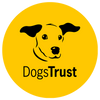Grooming your dog is an essential part of caring for him and it's also one of the best ways to bond with him. It builds trust and affection and if you have a puppy, grooming can be the ideal way to get him used to being touched and handled… which reaps rewards once he is fully grown!

Why is grooming good for my dog?
Grooming your dog includes brushing, bathing, clipping his coat, cleaning his ears, brushing his teeth and clipping his nails. Regular brushing gives your dog a healthy skin and coat as it controls shedding (moulting), stimulates blood flow and distributes natural oils. Grooming also allows you to monitor your dog's health by checking for cuts, swelling, lameness, lumps and parasites like fleas and ticks.
How often should I groom my dog?
How often you groom your dog depends on his breed, age and health. If you have a senior dog or a dog with a medical condition he may not be up to grooming himself and will rely on you to keep his coat clean and tidy. Active and working dogs that enjoy scrambling through bushes or splashing through muddy ditches will need additional grooming to clear caked on mud and bits of twig.
Different breeds, different needs
All dogs shed (moult) – even hairless dog breeds shed dander (dandruff/dried skin) and need regular maintenance to feel their best.
Double Coated Dogs
Dogs such as Border Collies and German Shepherds shed seasonally (or year-round) as they have double coats: a top coat and an undercoat. The top coat protects the dog by repelling water, sun, and thorns. The undercoat is composed of downy hair. It's unusual to clip a double coated dog but they do benefit from regular brushing.
Single Coated Dogs
Singled coated dogs, like Poodles and some Terriers, shed very little. However as their hair keeps growing continually these breeds need professional clipping every 6 – 8 weeks to keep their coats in order.
Hypo-allergenic Dogs
Shedding can cause problems for some owners with allergies and certain breeds that shed very little are: Affenpinscher, Basenji, Bedlington Terrier, Bergamasco, Bichon Frise, Bolognese, Brussels Griffon, Chinese Crested, Chinese Shar-Pei, Coton De Tulear, Dandie Dinmont Terrier, Schnauzers, Havanese, Irish Water Spaniel, Lakeland Terrier, Lhasa Apso, Maltese, Polish Lowland Sheepdog, Poodle, Portuguese Water Dog, Puli, Pumi, Shih Tzu, Soft-Coated Wheaten Terrier, Komondor, Welsh Terrier, West Highland White Terrier, Wirehaired Pointing Griffon and Yorkshire Terrier.
Long Haired Dogs
Long haired dogs (such as the Bearded Collie) and dogs with dense woolly coats (like the Samoyed and Alaskan Malamute) need daily brushing plus a regular trip to your dog groomer. If his coat becomes tangled and matted it can harm your dog's health. Water trapped underneath the mats can cause infection and hot spots. Dogs can also pull off clumps and mats, tearing their own skin. Severe matting (sometimes called felting) needs to be treated by a professional groomer as you could cut your dog's skin whilst trying to remove it.
Short Haired Dogs
Dogs with short hair (such as the Rottweiler, Dalmatian and Boxer) can shed just as much as long haired dogs! Although they may not grooming as often as their long haired cousins they need regular brushing to stay sleek and dirt free.
Curly and Ropey Coated Dogs
Certain breeds have curly or ropey coats (Bergamasco, Puli, Komondor, and Portuguese Water Dog) that evolved to keep out water and these dogs benefit from professional grooming skills.
Floppy Eared and Loose Skinned Dogs
Dog breeds with loose facial skin or wrinkles (such as the Neapolitan Mastiff, Shar Pei and Bloodhound) will need special attention to prevent dirt and bacteria from causing irritation and infection. If your dog has long or droopy ears (such as the Afghan Hound, English Cocker Spaniel and Basset Hound) you should check them weekly.
View our dog grooming accessories in our Products section.
How do I groom my dog?
Grooming should be an enjoyable process for both of you! Firstly prepare a grooming area. This should be a table with a non-slip surface at a height that is comfortable for you both. Assemble all the grooming equipment you will need so that it is easy to hand.
Grooming Check List
- Lead and collar
- Muzzle (if needed)
- Combs, brushes, grooming glove, clippers and scissors
- Dog shampoo, sprays and grooming powders
- Nail clippers
- Dog toothpaste and toothbrush
- Dog towel
- Dog treats
If your dog is not used to being groomed keep the first sessions short and keep him as relaxed as possible. Praise and reassure him to build his confidence. Put him on his lead and stand him on the table. Praise and reward him for standing still and each time you groom him.
Brush him very gently in the direction that his coat grows. As you brush examine him for burrs, seeds and thorns and remove any that you find as they can irritate and cause infections. If his coat is matted always hold the base of the mat as you comb it through to avoid pulling at his skin.
If you need to cut the mat out, avoid cutting your dog by keeping your hand between the scissors and the skin. If you notice tiny black specks on the dog's skin whilst you are grooming him this is a sign that he has fleas.
View our dog Health and Vaccinations Advice to learn more about fleas and worming
Visit our Products section for flea and worm treatments
If your dog has sore spots, itchy skin, or a notably dull coat check with your vet in case this is a sign of an underlying illness. If your dog has a clean bill of health you could consider changing his diet. There are several dog foods available that improve your dog's skin and coat and if these symptoms are due to an allergy you can also find dog foods for 'sensitive' dogs.
View our dog Feeding Advice to learn more

How do I bath my dog?
There is no need for your dog to dread bath time – or you for that matter!
Regular bathing teaches your dog to become accustomed to being bathed and removes excess hair, rejuvenates his skin, and eliminates odours. How often you bath your dog depends on his breed, age and health. If you have a working dog or an active dog who enjoys rolling in mud, bathing him will be more frequent.
It's a good idea to let your dog get used to being in the bathroom and hearing the sound of running water. Have some dog treats on hand to reward him for being calm and patient whilst being bathed.
Puppies sometimes think that bath time is play time and wriggle or nip. To stop this you can place a toy that floats in the bath to keep him occupied and distracted.
-
Always close the bathroom door when you are bathing your dog to prevent him escaping if he does decide to take off. Prepare the bathroom by removing all items that could be damaged by water or knocked on to the floor. Before you bath your dog brush him thoroughly to remove mats and tangles.
-
Place a rubber bath mat in the bath so that your dog will be secure and fill the bath 3 – 4 inches full of lukewarm water. Lift your dog into the bath and use a spray hose to gently wet him. Take care not to spray directly into his face. Always use a dog shampoo and massage this into his coat. Depending on his coat's condition you can use shampoos that are designed to improve shine or cure dandruff. Rinse thoroughly to remove all residues.
-
After his bath you can squeeze excess water from his coat and blot him dry with a towel. If you prefer to use a hair dryer make sure you accustom him to it before using. Don't let him go outside in cool or cold weather until he is completely dry.
Visit our dog Products section for a wide selection of dog shampoos and conditioners
Checking my dog's ears, teeth and nails
Checking your dog's ears, teeth and nails should be part of your regular grooming routine.
Tooth Brushing
Brushing your dog's teeth stops bad breath, removes plaque and tartar, prevents gum disease and stimulates blood flow to the gums. Only use dog toothpaste and toothbrushes. As dog toothpaste is enzymatic you don't have to scrub their teeth, just make sure that it coats all the surfaces.
View our dog Products section for a choice of dog toothpastes and brushes
Ear Cleaning
Your dog's ears are very delicate and sensitive but they must be cleaned to prevent the build-up of wax and the growth of bacteria, fungus, and yeast, as these can lead to infection and itching. Never use cotton buds to clean your dog's ears. Cleansers, drops and wipes are the safest method.

Nail Clipping
Your dog's nails should be short enough not to click on the floor when he walks. Nails that are too long can curl into the dog's pad which can hurt him, cause toes to spread, difficulty in walking, poor posture, and joint pain. They can also split and infection can set in. Senior dogs in particular don't wear down nails as quickly as younger dogs.
Most dogs dislike having their nails clipped – a dog's nails are living tissue with a blood filled vein. If you clip your dog's nails too close to the quick this can hurt them and cause bleeding. Understandably owners can be nervous of clipping their own dog's nails. If you have not clipped your dog's nails before we recommend that you contact a professional groomer who can either clip them for you or show you how.
Benefits of Professional Dog Grooming
Professional Groomers are skilled experts who have the experience and equipment to safely groom dogs of all sizes, ages and breeds. They are also trained to spot potential health risks before they become major complications, giving you peace of mind that your dog is in the best hands.
Their services can include:
Trouble free nail clipping – invaluable for dogs who hate having their feet touched and nails trimmed. Professional Groomers have the equipment needed to ensure safe and comfortable nail clipping for your dog.- Coat clipping, trimming, scissoring and brushing – giving your dog a fancy or show cut requires a professional groomer's specialist training and knowledge to properly accomplish.
- Bathing - a professional groomer will be able to apply the most suitable products for your dog's coat and protect your dog's skin.
- Coat and skin examination – inspection of your dog for cuts, thorns and punctures. When detecting these they will apply antiseptic solutions to avoid an infection.
- Skin condition analysis - a professional groomer will be able to apply the most suitable products to protect your dog's skin.
- Detection of parasites - a professional dog groomer will also be able to easily tell if your dog has fleas or mites.
- Detection of health issues - professional groomers are familiar with dog anatomy and will notify you of abnormalities such as lumps, skin discolouration, rashes, skin lesions, bald patches, gum discolouration or bleeding.
- Other services - ear cleaning, tooth brushing and treatment of anal glands







